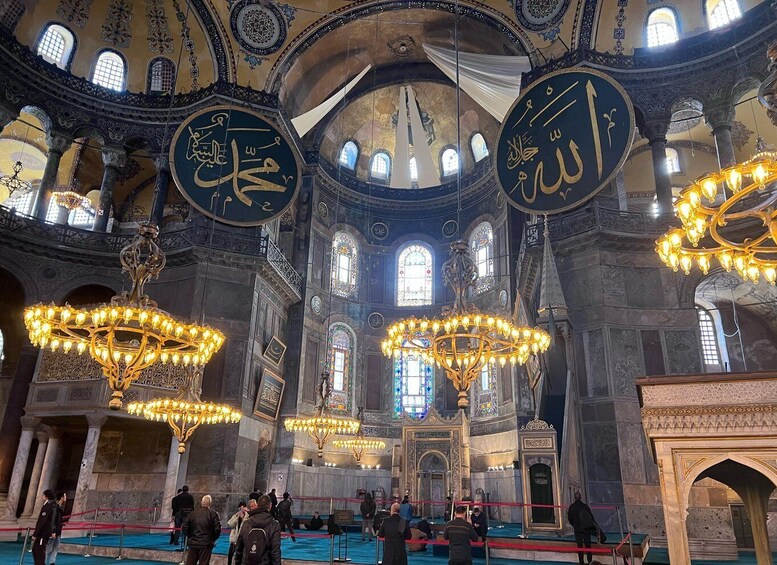The Hagia Sophia with its innovative architecture, rich history, religious significance and extraordinary characteristics has been fighting against time for centuries, was the largest Eastern Roman Church in İstanbul.
Constructed three times in the same location, it is the world’s oldest and fastest-completed cathedral. With its breathtaking domes that look like hanging in the air, monolithic marble columns and unparalleled mosaics, is one of the wonders of world’s architecture history. The sheer dazzling beauty of mosque with its magnificent play on space, light, and color provokes worship in the believer! Hagia Sophia pose on the ground of the first hill of İstanbul, precisely at the tip of the historic peninsula, surrounded by the Sea of Marmara, the Bosphorus and the Golden Horn on three sides.
When it was first built, it was named Megale Ekklesia (Big Church); however, after the fifth century, it was referred to as the Hagia Sophia (Holy Wisdom). The church was the place in which rulers were crowned, and it was also the biggest operational cathedral in the city throughout the Byzantine period. The first church was constructed by Emperor Konstantios (337-361) in 360. The first church was covered with a wooden roof and expanded vertically (basilica) yet was burned down after the public riot that took place in 404 as a result of the disagreements between Emperor Arkadios’ (395-408) wife empress Eudoksia and İstanbul’s patriarch Ioannes Chrysostomos, who was exiled. The patriarch’s mosaic portrait can still be viewed at the tymphanon wall located in the northern part of the Hagia Sophia. No remains have been recovered from the first church; however, the bricks found in the mosque storage branded ‘Megale Ekklesia’ are predicted to belong to the first construction.
The second church was reconstructed by Emperor Theodosios II (408-450) in 415. This basilical structure is known to contain five naves and a monumental entrance; it is also covered by a wooden roof. The church was demolished in January 13, 532, after the public riot (Nika revolts) that took place during the fifth year of Emperor Justinianos’ reign (527-565), when the ‘blues’ who represented the aristocrats, and the ‘greens’ who represented the tradesman and merchants in the society, collaborated against the Empire. Remains found during the excavations led by A. M Scheinder of the İstanbul German Archeology Institute, 2 meters below ground level, include steps belonging to the Propylon (monumental door), column bases and pieces with lamb embossings that represent the 12 apostles. In addition, other architectural pieces that belong to the monumental entrance can be seen in the west garden.
Best of Hagia Sophia Tour include the services of a knowledgeable guide who can provide insights and stories about the city's landmarks. This type of tour is ideal for solo travelers, families, or small groups looking for a more personalized and exclusive experience in Istanbul.




